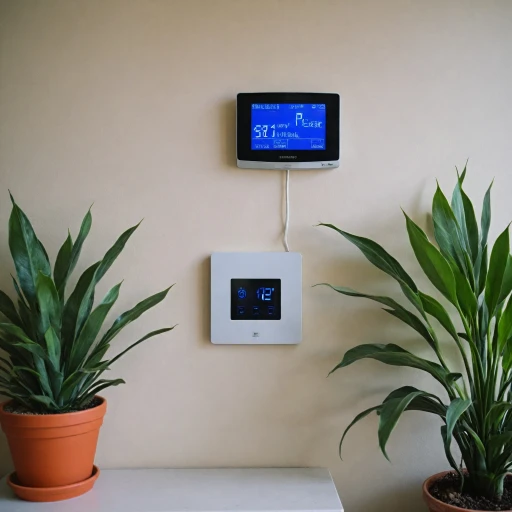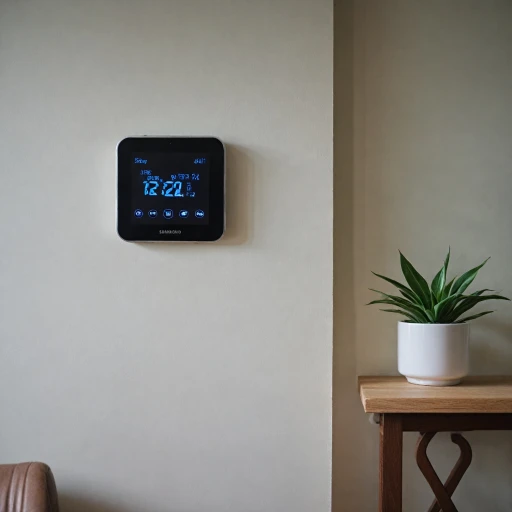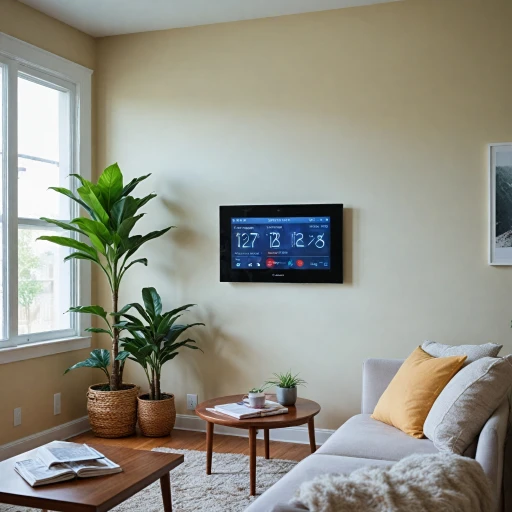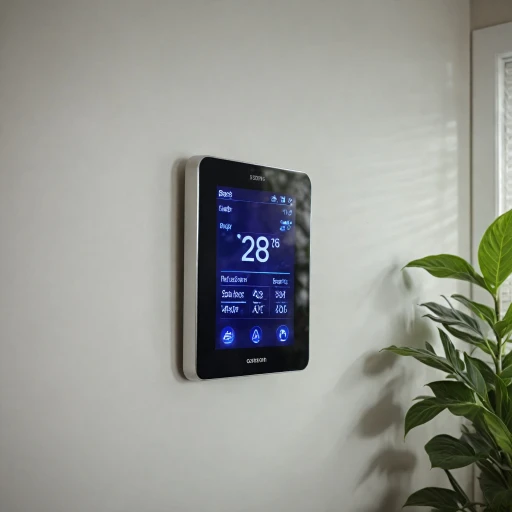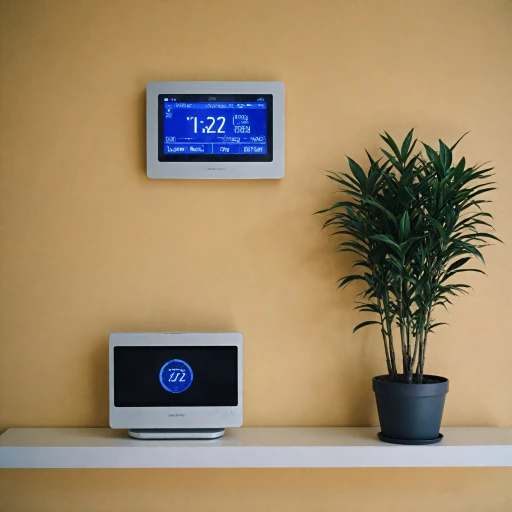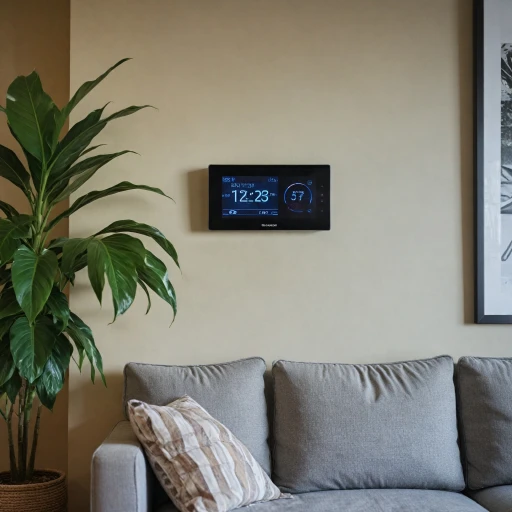
Understanding Alexa-Compatible Thermostats
The World of Alexa-Compatible Thermostats
Alexa-compatible thermostats represent a leap forward in home comfort and efficiency. These devices seamlessly integrate with Amazon's Alexa, offering homeowners the convenience of voice control, accessible anywhere with the use of the Alexa app. This integration facilitates an easy way to manage your home’s heating and cooling system, making life more comfortable with just a simple voice command. When considering an upgrade to a smart thermostat, such as Ecobee Smart or the Google Nest Learning Thermostat, understanding their compatibility with platforms like Alexa and Google Assistant is crucial. Alexa-compatible thermostats allow users to make adjustments to the temperature or switch between heating and cooling modes without manually interacting with the device’s display. This smart technology simplifies everyday tasks, offering hassle-free, hands-free operation. To better understand how these thermostats differ, a range of features should be considered, such as energy control, advanced sensors, and smart home integration. Some of the best options in the market, like the Amazon Smart Thermostat and Nest Thermostat, can automatically adjust based on your schedule and behaviors, resulting in efficient energy usage and savings over time. Choosing an Alexa-compatible model, such as those reviewed in Exploring Smart Thermostats Compatible with Alexa, can significantly enhance the way you manage your home's environment. With advanced technology, these thermostats contribute to an intelligent home ecosystem, enabling more personalized and efficient control over indoor climate conditions. While these devices come packed with technological advances, the real benefit lies in their ability to integrate into your daily routine, helping you maintain comfort while potentially reducing your energy consumption.Key Features to Look for in a Smart Thermostat
Selecting Key Smart Thermostat Features
When choosing an Alexa-compatible smart thermostat, it’s essential to consider certain features that can optimize your home's heating and cooling system. Here’s a rundown of critical aspects to look out for:
- Compatibility: Ensure that the smart thermostat you choose, such as the Nest thermostat or Ecobee smart, is compatible with your existing HVAC system and Alexa integration.
- Energy Efficiency: A good smart thermostat assists in saving energy by learning your schedule. Devices like the Nest Learning Thermostat can automatically adjust the temperature when you're not home.
- Control Options: Look for thermostats that offer seamless control via the Alexa app, voice control using Alexa or Google Assistant, or even manual control through an intuitive display.
- Integration and Sensors: Thermostats like the Ecobee feature room sensors to maintain consistent temperatures throughout your house. Proper integration with Amazon smart devices can also enhance temperature regulation.
- Innovative Display: Investing in a thermostat with a touchscreen can make adjustments straightforward and more user-friendly. Explore the benefits of a touchscreen thermostat for more insights.
- Remote Access: The ability to control your thermostat remotely via an app can offer convenience and allow for adjustments based on your routine changes, directly impacting energy savings.
Choosing the best smart thermostat tailored to your needs involves looking at these elements, considering how each feature complements your home environment and lifestyle. This will help ensure optimal energy control and improve overall air quality.
Benefits of Integrating Alexa with Your Thermostat
Advantages of Linking Alexa and Your Thermostat
Integrating your thermostat with Alexa offers a plethora of benefits that amplify the convenience and efficiency of your smart home ecosystem. Not only does it allow seamless control over temperature settings, but it also enhances the overall user experience by providing a more connected environment. Below are some of the key advantages:- Voice Control Convenience: With Alexa, you can adjust your home’s temperature simply by using voice commands. This hands-free feature is particularly useful when you are busy or far from the thermostat, allowing you to maintain comfort without interrupting your activities.
- Enhanced Energy Efficiency: By integrating Alexa, your smart thermostat can leverage real-time data to optimize heating and cooling schedules. This helps reduce energy costs by ensuring your HVAC system only operates when necessary, thanks in part to learning capabilities featured in devices like the Nest Learning thermostat.
- Remote Management: Whether you're at home or on the go, using the Alexa app connected to Amazon smart thermostats, enables you to monitor and adjust settings remotely. This feature ensures you come home to the perfect climate while also managing energy consumption efficiently.
- Comprehensive Connectivity: Smart thermostats such as those from Nest, Amazon, and Ecobee integrate seamlessly with the Alexa ecosystem. This compatibility allows for a comprehensive smart home setup by connecting with other devices such as smart lights and locks, providing a holistic approach to home automation.
- Improved User Experience with Apps: Additional enhancements are found through apps that offer intuitive interfaces, allowing users to easily set temperature ranges, monitor energy usage, and access historical data for better decision-making capabilities.
Installation and Setup Tips
Setting Up Your Smart Thermostat with Precision
Getting your Alexa-compatible smart thermostat installed correctly is crucial for ensuring it operates with the best efficiency and reliability. Here's a step-by-step guide on how you can do this:- Check Compatibility: Before starting any installation, make sure your HVAC system is compatible with your new thermostat. Whether you have a Nest thermostat, Ecobee smart, or any other model, reviewing your system's compatibility will save you time and frustration.
- Read the Manual: Always refer to the provided manual or online resources, as there may be specific requirements for your particular brand, such as precise wire connections or setup sequences that need to be followed.
- Install the Base Plate: After removing your old thermostat, attach the new base plate. Be sure to use a level and secure it firmly to the wall. This step is crucial to ensure that sensors read the room temperature accurately.
- Wire Connections: Connect the appropriate wires to the labeled ports on your new thermostat. Take your time with this step, as improper wiring can lead to faulty readings or malfunctions. Ensure that the C wire (common wire) is connected if your smart thermostat requires it.
- Power Up and Configure: Once everything is in place, power the system back up and initiate the configuration process. This typically involves connecting to your Wi-Fi network, syncing the device with the Alexa app, and allowing the thermostat to calibrate itself for optimal temperature control.
- Integrate Additional Features: Make sure to activate any additional features like voice control through Amazon Alexa or Google Assistant, if supported. These features can greatly enhance usability by allowing seamless interaction with the thermostat via simple voice commands.
- Test the System: Finally, test your setup by adjusting the temperature and confirming that the thermostat responds correctly. Ensure that your HVAC system responds appropriately to changes in settings and that the display accurately reflects room temperature and upcoming schedules.
Troubleshooting Common Issues
Common Challenges and How to Solve Them
When integrating Alexa-compatible thermostats such as the Ecobee Smart, Nest Thermostat, or any other smart thermostats, you might encounter a few hurdles. Here’s how to tackle some of the most common issues you may face:
- Connectivity Problems: Smart thermostats rely on stable Wi-Fi connections. Ensure your device is within range of your router. Double-check that your network is functioning properly. Some thermostats, like the Google Nest, may require a power reset or router reboot if connectivity falls.
- Voice Control Lags: If your Amazon Alexa or Google Assistant commands are sluggish or unresponsive, verify that your thermostat is connected correctly in the Alexa app or Google Home. Updating the software or rebooting the devices might resolve such lags.
- Inconsistent Temperature Adjustments: Occasionally, fluctuations in temperature control can occur. Utilize sensors that come with many smart thermostats, like Ecobee, to ensure precise temperature regulation based on occupancy and air quality.
- Incorrect Wiring: Incorrect installation, especially with the C-wire issues or the lack thereof, might affect the thermostat’s functionality. Consulting a professional or detailed guides provided by brands like Nest and Ecobee could help clarify wiring configurations significantly.
- Software Updates and Bugs: Regular updates help fix bugs and introduce new features. Ensure your thermostat’s firmware is up-to-date, which can be managed through the thermostat’s app interface.
These solutions offer an overview of maintaining and improving thermostat performance. It's beneficial to explore manuals and online support communities focused on your specific thermostat model for additional help. With a bit of patience and adjustments, integrating Alexa with your heating cooling system offers substantial energy savings and enhanced control.

